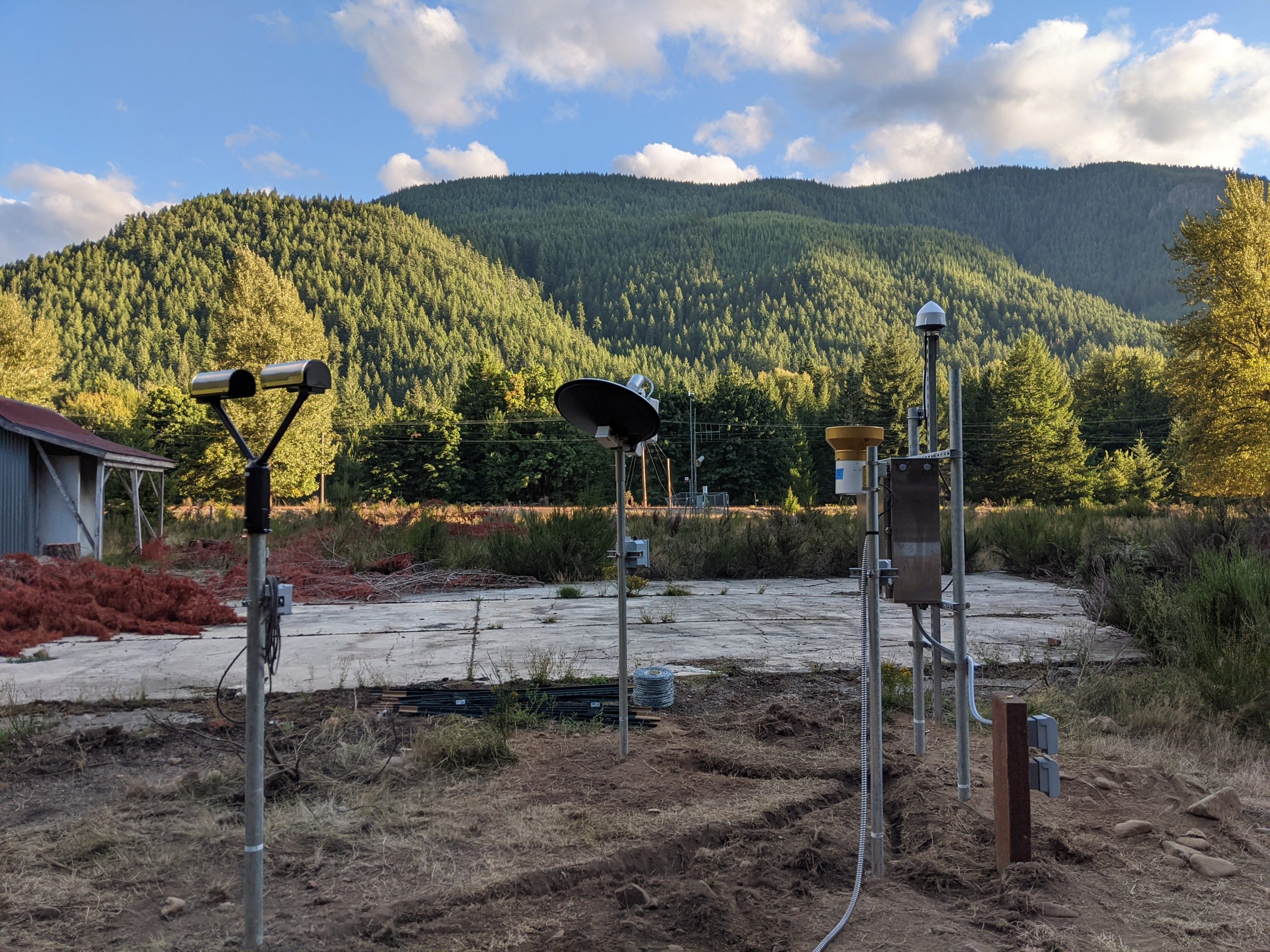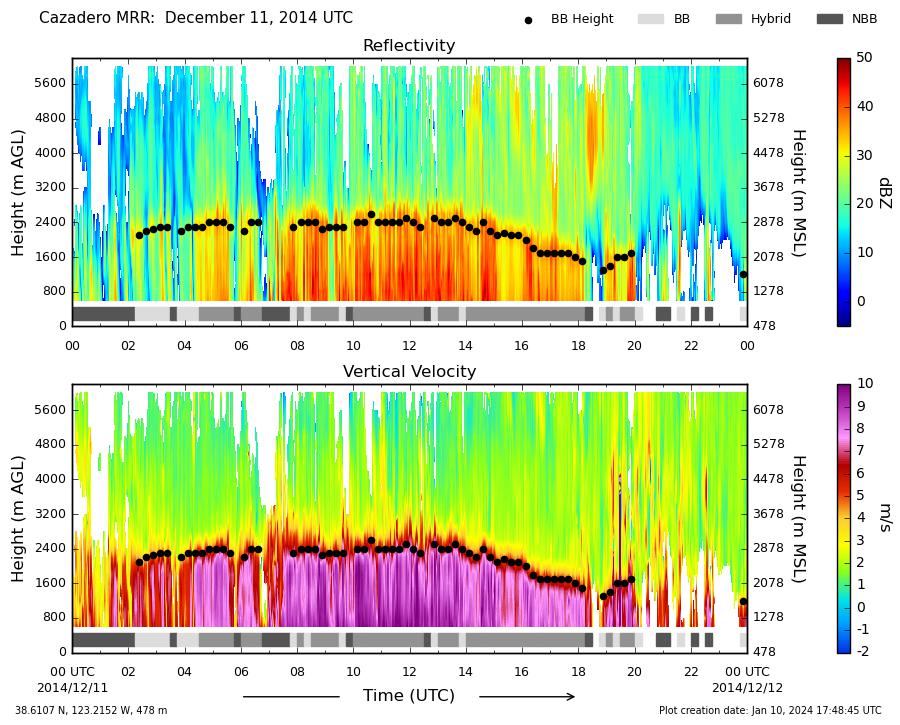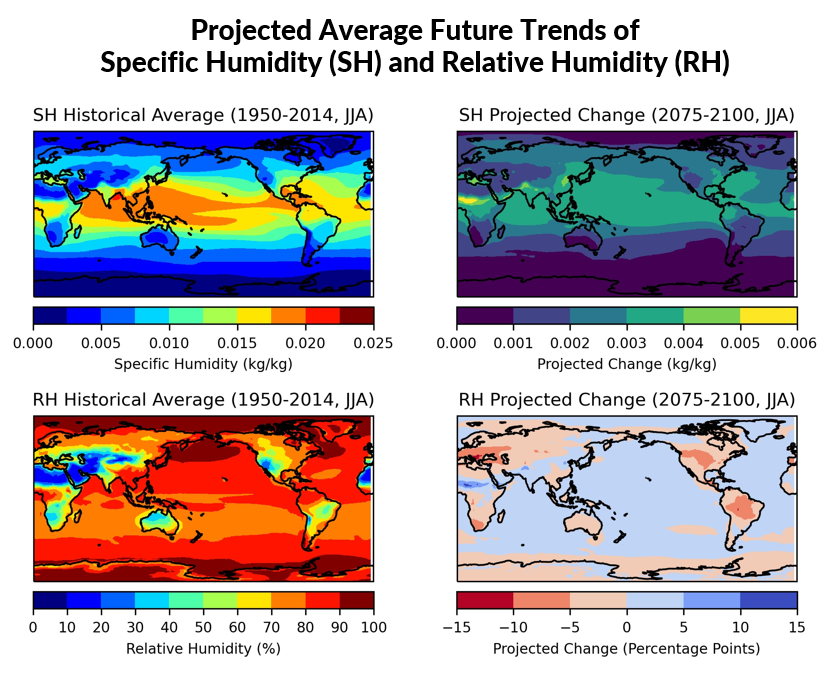LOCA2 Station Temperature Projections
 I helped David Pierce and Dan Cayan develop the Localized Constructed Analogs version 2 (LOCA2) statistically downscaled CMIP6 climate projections for North America.
I helped David Pierce and Dan Cayan develop the Localized Constructed Analogs version 2 (LOCA2) statistically downscaled CMIP6 climate projections for North America.
I then led the development of a set of LOCA2 future projections of hourly temperatures for stations throughout California and Nevada that are used by the energy sector to understand and forecast California’s state energy demand. I am currently using the dataset to study the projected impacts of temperature extremes on human health and agriculture in California through the end of century.
Link to report prepared for the California Energy Commission.
Data Processing & Visualizations for CW3E Observations
 I manage the data processing workflows for many of CW3E's meteorological observations throughout the west coast, including Micro Rain Radars (MRRs) and disdrometers. This involves transferring data from remote sites, performing quality control and data processing, and sharing datasets with stakeholders through platforms such as the California Data Exchange Center (CDEC). I also develop new workflows as we install new sites: for example, we installed several Radmet stations in the Green River watershed in Washington in late 2023. The sites were outside of cell coverage so I designed a custom workflow to transfer data via the GOES satellite.
I manage the data processing workflows for many of CW3E's meteorological observations throughout the west coast, including Micro Rain Radars (MRRs) and disdrometers. This involves transferring data from remote sites, performing quality control and data processing, and sharing datasets with stakeholders through platforms such as the California Data Exchange Center (CDEC). I also develop new workflows as we install new sites: for example, we installed several Radmet stations in the Green River watershed in Washington in late 2023. The sites were outside of cell coverage so I designed a custom workflow to transfer data via the GOES satellite.
Datasets are utilized in near real-time for forecasting (e.g., AR forecasting during AR Recon) and for research/technical studies such as forecast verification of CW3E's West-WRF model (e.g., as part of the FIRO program).
Links to CW3E MRR and disdrometer webpages and data access.
Improving Micro Rain Radar Snow Level Measurements
 Accurate knowledge of the atmospheric snow level elevation is important to hydrometeorological forecasts because it influences the timing and magnitude of runoff generation as well as flood risk during precipitation events. CW3E has deployed a network of ten MRRs to enhance snow level observations across the western United States. I conducted a study to determine whether we could modify our snow level detection algorithm to improve the accuracy and frequency of these measurements. I presented the results at AMS 2024, and a draft paper is in progress.
Accurate knowledge of the atmospheric snow level elevation is important to hydrometeorological forecasts because it influences the timing and magnitude of runoff generation as well as flood risk during precipitation events. CW3E has deployed a network of ten MRRs to enhance snow level observations across the western United States. I conducted a study to determine whether we could modify our snow level detection algorithm to improve the accuracy and frequency of these measurements. I presented the results at AMS 2024, and a draft paper is in progress.
Link to oral presentation slides presented at AMS 2024.
CMIP6 Projections of Global Humidity Changes
 Using climate projections from a dozen CMIP6 GCMs, I explored how future projected changes in humidity compare to what we expect as explained by projected changes in temperature. My results showed how model projections of average specific humidity tend to be drier than the expected values explained by projected temperature changes, hinting at other phenomena in play besides rising global temperatures. I also investigated how these differences vary by season and by location, as well as changes in the frequency of humidity extremes, showing that the frequency of extreme low relative humidity days is projected to increase by a factor of 5 to 10 across many parts of the globe by the end of century.
Using climate projections from a dozen CMIP6 GCMs, I explored how future projected changes in humidity compare to what we expect as explained by projected changes in temperature. My results showed how model projections of average specific humidity tend to be drier than the expected values explained by projected temperature changes, hinting at other phenomena in play besides rising global temperatures. I also investigated how these differences vary by season and by location, as well as changes in the frequency of humidity extremes, showing that the frequency of extreme low relative humidity days is projected to increase by a factor of 5 to 10 across many parts of the globe by the end of century.
Link to AGU 2022 poster presentation.
